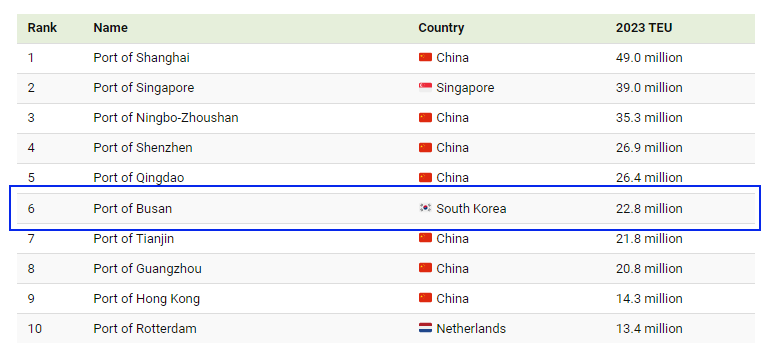The world is changing. As Asia emerges as the center of global trade, the trend is becoming more evident. The fact that nine out of the top ten busiest ports in the world in 2024 are located in Asia proves this. This shift is closely tied to the explosive growth in trade within the region.

Asia Emerges as the Trade Hub
In recent years, Asia has experienced remarkable economic growth. In the 1990s, most of Asia’s exports were destined for other continents. However, [today, about 60% of Asia’s exports remain within the region.] This indicates that Asia is no longer just a production base; it has become a central hub of trade.
Asian ports are not merely places where large volumes of cargo are handled. They play a crucial role at the heart of the global supply chain. For instance, [China’s port network strengthens its position as the world’s largest exporter, closely linked to the Belt and Road Initiative (BRI).]
Top 10 Busiest Ports in the World
As of 2024, a look at the world’s top 10 busiest ports by cargo volume (TEU) reveals the central role of Asia in global trade.

- Port of Shanghai (China): The largest port in the world, handling hundreds of millions of TEUs annually, is a key player in global logistics.
- Port of Singapore: With over 1,000 ships passing through daily, this port is a crucial hub connecting Asia and the world.
- Port of Shenzhen (China): A tech and trade hub, it grows rapidly alongside the city it serves.
- Ningbo-Zhoushan Port (China): A major port in eastern China, handling most of its cargo within Asia.
- Port of Guangzhou (China): A key trading port in southern China, it has strong connections to both Asian and global markets.
- Port of Qingdao (China): A global logistics hub where various goods originate or arrive.
- Port of Hong Kong: A vital gateway connecting China with the world, facilitating a diverse range of trade both within and outside Asia.
- Port of Busan (South Korea): The main logistics hub in Northeast Asia, particularly crucial for South Korea’s import and export activities.
- Port of Tianjin (China): A significant trade port in northern China, serving as a vital gateway to the world.
- Port of Rotterdam (Netherlands): Representing Europe, this port is a key trade center not only for Asia but also within Europe.
These ports are more than just pathways for goods; they symbolize the economic power of their respective countries and the centrality of global trade. The dominance of Chinese ports on this list is particularly noteworthy. Since 2009, China has been the world’s largest exporter, a status closely linked to the growth of these ports.
Ports Driving the Future of Global Trade
Asia is no longer just the world’s production base. It is building its own trade networks and emerging as a core part of the global economy. These ports are at the center of this transformation.
As this change unfolds, it’s intriguing to see how these Asian ports will continue to evolve and reshape the flow of global trade. They are poised to play an even greater role in the future of global commerce.
Conclusion
Asian ports have grown beyond just handling large volumes of cargo; they have become crucial hubs in the global economy. This transformation is set to continue, bringing more opportunities and challenges. We encourage readers to keep an eye on this evolving trend and seek new opportunities within it.
Source: Visual Capitalist, “Ranked: The 10 Busiest Ports in the World, by Cargo Traffic”
